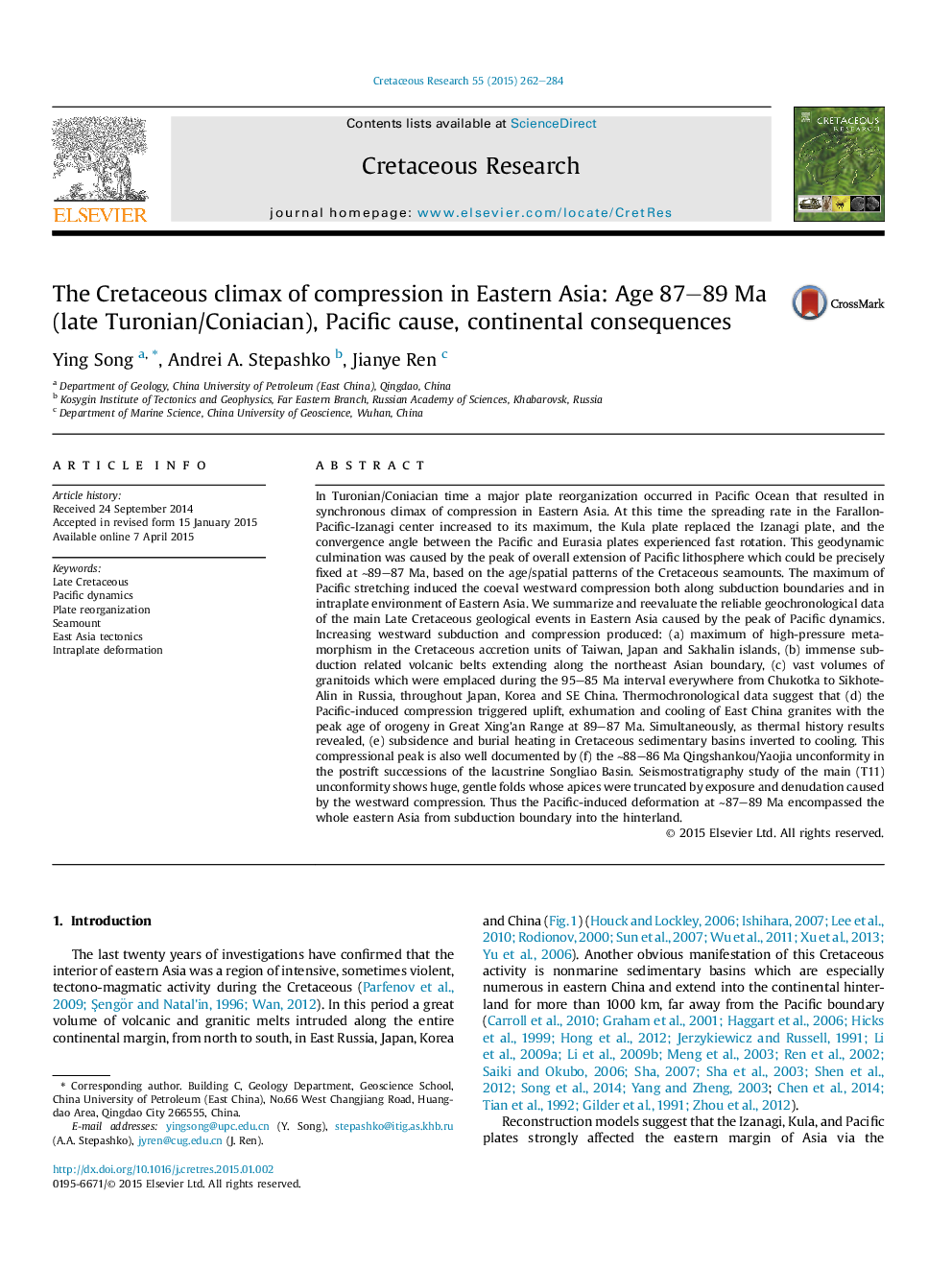| کد مقاله | کد نشریه | سال انتشار | مقاله انگلیسی | نسخه تمام متن |
|---|---|---|---|---|
| 4746911 | 1642068 | 2015 | 23 صفحه PDF | دانلود رایگان |

• Seamounts dynamics is utilized to clarify the Late Cretaceous tectonics of the western Pacific plate.
• Major plate reorganization induced by overall extension at ∼87–89 Ma is recognized in northwest Pacific.
• Reevaluation of reliable geochronological data demonstrates coeval compression climax along the Asian continental margin.
• The 87–89 Ma compression peak is recognized in age patterns of HP metamorphic rocks, volcanic belts and granite provinces.
• New AFT and seismic studies identify the far-reaching Pacific influence on the postrift evolution of the Songliao basin.
In Turonian/Coniacian time a major plate reorganization occurred in Pacific Ocean that resulted in synchronous climax of compression in Eastern Asia. At this time the spreading rate in the Farallon-Pacific-Izanagi center increased to its maximum, the Kula plate replaced the Izanagi plate, and the convergence angle between the Pacific and Eurasia plates experienced fast rotation. This geodynamic culmination was caused by the peak of overall extension of Pacific lithosphere which could be precisely fixed at ∼89–87 Ma, based on the age/spatial patterns of the Cretaceous seamounts. The maximum of Pacific stretching induced the coeval westward compression both along subduction boundaries and in intraplate environment of Eastern Asia. We summarize and reevaluate the reliable geochronological data of the main Late Cretaceous geological events in Eastern Asia caused by the peak of Pacific dynamics. Increasing westward subduction and compression produced: (a) maximum of high-pressure metamorphism in the Cretaceous accretion units of Taiwan, Japan and Sakhalin islands, (b) immense subduction related volcanic belts extending along the northeast Asian boundary, (c) vast volumes of granitoids which were emplaced during the 95–85 Ma interval everywhere from Chukotka to Sikhote-Alin in Russia, throughout Japan, Korea and SE China. Thermochronological data suggest that (d) the Pacific-induced compression triggered uplift, exhumation and cooling of East China granites with the peak age of orogeny in Great Xing'an Range at 89–87 Ma. Simultaneously, as thermal history results revealed, (e) subsidence and burial heating in Cretaceous sedimentary basins inverted to cooling. This compressional peak is also well documented by (f) the ∼88–86 Ma Qingshankou/Yaojia unconformity in the postrift successions of the lacustrine Songliao Basin. Seismostratigraphy study of the main (T11) unconformity shows huge, gentle folds whose apices were truncated by exposure and denudation caused by the westward compression. Thus the Pacific-induced deformation at ∼87–89 Ma encompassed the whole eastern Asia from subduction boundary into the hinterland.
Figure optionsDownload as PowerPoint slide
Journal: Cretaceous Research - Volume 55, July 2015, Pages 262–284